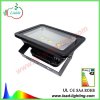I installed a pair of PIR-activated flood lamps above my two-car garage door a few years ago... maybe ten or fifteen years ago. Mine are not dim-able, and I see no reason to want them to be dim-able. I did hate the fact that they would come on whenever the wind blew and waving tree branches would trigger it. Of course it has a sensitivity control, and I could "aim" the PIR sensor up, down, and left to right. But the system is mounted about thirty feet off the ground, so that would mean a lot of trips up and down a ladder to "adjust" it for optimum sensitivity while rejecting passing animals, waving tree branches, and whatever.
It has a mode where you turn it on, then turn it off for about seven seconds, then turn it on again. After playing through this ritual, the light comes on and stays on, effectively by-passing the PIR sensor. We ran it that way for years, in lieu of getting the PIR sensor "adjusted" to our satisfaction. With two 90 W halogen flood lamps, the effect on our monthly electrical bill was not insignificant, especially if we forgot to turn it off at daybreak. Worse, however, was the on/off cycling of the halogen lamps if we forgot to activate the "constant on" feature, which led to rapid failure of the lamps. I would have to climb that damned ladder at least once a year to re-lamp the fixture. The inconvenience and cost of the lamps wore me down. The last time the halogen lamps needed replacement I used LED flood lamps, purchased from a home improvement store for a semi-ridiculous sum of money.
That was two or three years ago. The LED floods are still going strong. I may even operate them with the PID again. It was the best purchase of LEDs I have ever made. Since then, I have almost completely relamped virtually everything in the house with LED lamps. The gas clothes dryer and the gas oven still have incandescent lamps; I have eight 60W, frosted large-globe, incandescent lamps on a wall switch/dimmer flanking the medicine cabinet mirror in the bathroom, just because I like them; and there are some compact fluorescent lamps in a few places.
If you can get LED flood lamps at a reasonable price, even if they are not dim-able, I would replace your halogen lamps. If the LED lamps happen not to be dim-able, I would replace the PIR fixture with one that just does on/off.
BTW, burglars in my neighborhood are not deterred by PIR-activated lights. Most of them "case" the neighborhood, looking for houses whose occupants are not present during daylight hours. We have been burgled twice that way, but have since installed dead-bolt door locks requiring a key to open from either side. That way, if they smash a window to get in, they can't just cart our stuff out through the door.
I am still looking for a self-installed remote-monitoring system that sends intrusion alerts and high-resolution camera feeds to my cell phone. It must not rely on a wired telephone or cable connection, but a dedicated cellular connection would be okay.

